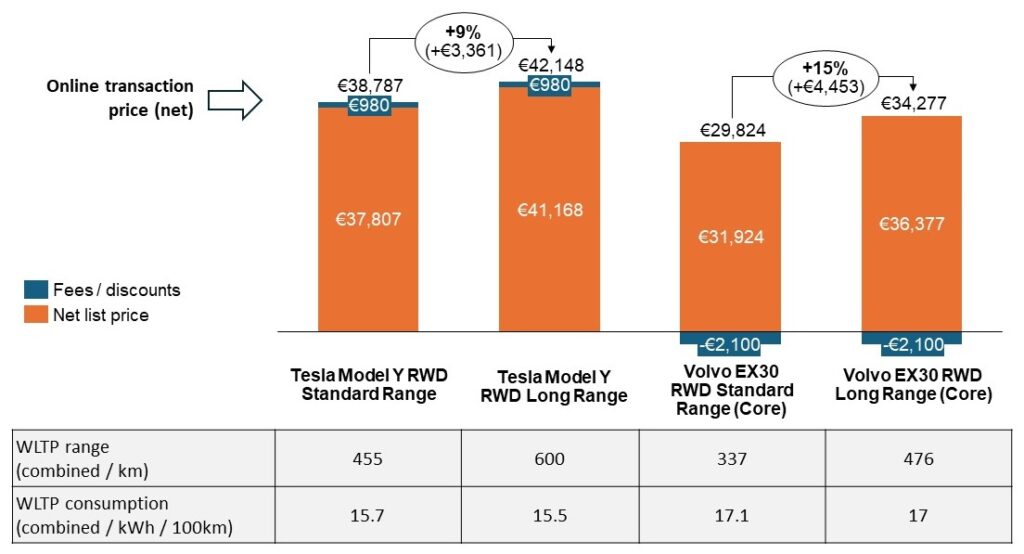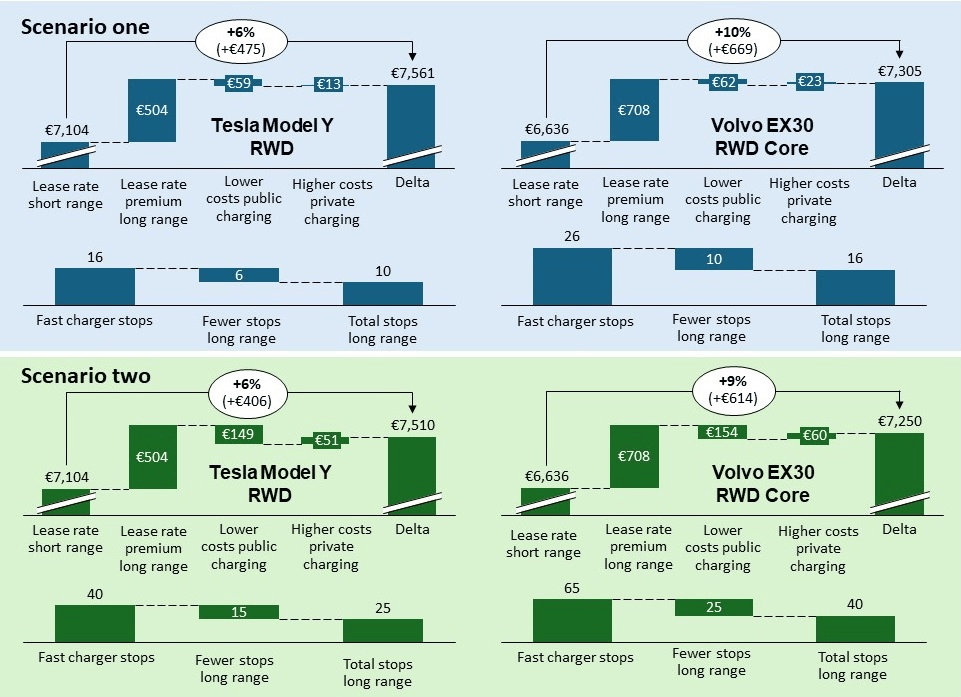China’s plug-in hybrid (PHEV) market appears to be slowing following another month of struggling growth. But how are these performances affecting domestic brands? Autovista24 special content editor Phil Curry examines the data.
In September, China’s PHEV market, including range-extended electric vehicles, once again showed signs of a slowdown. Its 0.4% year-on-year improvement was the lowest result since a 51.4% decline in June 2020, according to EV Volumes data. Meanwhile, the BEV market grew once again in September. In total, 836,711 models were sold, which equated to a rise of 26.5%.
Between January and September, China’s PHEV market saw 3,859,629 passenger car sales, a 21% increase year on year. At the end of the first half of 2025, this growth was at 35.7%, highlighting the powertrain’s third-quarter struggles.
Meanwhile, the BEV market saw an improvement of 37.4% across the first nine months of 2025.
The overall Chinese electric vehicle (EV) market rose by 30.3% over the first three quarters of the year. However, this was down by 10.1 percentage points (pp) compared to the growth in the first half of 2025.
The PHEV problem
Some of the most popular PHEV models in China suffered declines in the third quarter. Combine this with the growth recorded at the end of 2024, and the last quarter of 2025 may prove difficult.
The market’s issues have caused problems for some Chinese brands, especially those with a stronger PHEV offering. Both Li Auto and Aito have posted overall declines after three quarters of the year.
BYD, which dominates the PHEV market, saw its numbers fall between July and September, coinciding with the PHEV slowdown. For the second consecutive month, the BYD Song Plus did not make the monthly top 10, hampering its sales growth.
The PHEV sector could play a crucial role in determining how certain brands perform for the rest of the year. Meanwhile, a strong BEV market is helping some domestic marques go from strength to strength.
BYD’s third-quarter PHEV struggles
Nine months into 2025, BYD sold the largest volume of EVs of any brand in China. But its growth slowed dramatically in the third quarter. With 52.6% of its sales coming from PHEVs, is it responsible for the sector’s poor form in the same three-month period?
Between July and September, the carmaker saw volumes drop by 19.4%. This meant its figures for the nine-month period grew by just 2.5%. In the first half of 2025, the brand’s numbers were up by 19.9%
With a 24.9% EV market share in the first three quarters of 2025, it is comfortably the region’s plug-in leader. However, its hold has slipped by 6.8pp compared with the same period last year.
It is the PHEV market where BYD has struggled the most. Six of BYD’s PHEVs made the top 10 in September this year. Of these, four models lost volume year on year, while the Qin Plus recorded an improvement of 41%. Meanwhile, the BYD Sea Lion 06 first recorded sales in June this year.
But the brand’s problems are not just related to plug-in hybrids. In the BEV market, the BYD Seagull placed fifth in September as its sales shrank by 47.3% year on year.
However, this was countered by the BYD Yuan Up in fifth, which enjoyed a 61.8% improvement. Furthermore, the BYD Dolphin saw a 41.7% uptick in demand in eighth.
The carmaker is focusing on export markets, while it maintains a diverse portfolio of products in its domestic market. For now, BYD can rest on its laurels, with no real challenger yet in sight.
Geely’s standout performance
The standout brand so far this year has been Geely, including its Galaxy subsidiary. The carmaker has seen volumes increase by 234.7% in the first nine months of 2025. This equated to an 8.8% market share, up 5.4pp.
Geely took a stronger footing in the BEV market, with 69.5% of its EV sales coming from all-electric models. This was thanks to the Geely Geome Xingyuan, which was the best-selling BEV in China between January and September. It made up 59.1% of Geely’s BEV deliveries in the period, and 41.1% of its total sales in the nine months.
But Geely has endured PHEV struggles too. The Galaxy Starship 7, which led the market in January, has since slipped down the charts. The model did not place in the top 10 during September and sat in 10th in the cumulative results after nine months.
Yet the new Galaxy A7 may offer some hope. It made its way into the top 10 for the first time in August and placed again in September. Still, Geely’s performance after three quarters owes much to the Geome Xingyuan, which is likely to be China’s best-selling BEV at the end of 2025.
Wuling and Tesla’s rollercoaster ride
Wuling, incorporating its Baojung subsidiary, has seen inconsistent results so far this year. Yet after three quarters of 2025, the carmaker still saw volumes improve by 44.1%. Its market share sat at 5.9%, up by 0.5pp.
Like Geely, Wuling’s volumes came mostly from the BEV market. Of its EV sales, 94.1% were all-electric. The Wuling Mini was China’s third-best-selling BEV between January and September.
It was helped by its chart-topping performance in September, beating the Tesla Model Y by 570 units. This was an impressive result, considering the US brand’s quarterly push, which often sees it lead in the month.
Tesla was the fourth best-selling brand after three quarters of the year. The brand saw its volumes fall by 6.1% year on year between January and September 2025. Meanwhile, market share dropped by 1.8pp.
With a 100% focus on the BEV market, Tesla is not affected by the fluctuation in the PHEV sector. Its Model Y has performed well, but it is not leading the market as it has in the past.
Additionally, the Model 3 has seen its popularity decline. In September, its deliveries fell by 15.2% year on year, despite the brand’s end-of-quarter push.
Leapmotor leaps forward
Between January and September, Leapmotor took fifth in the brand table for EV sales, following a strong third quarter. It jumped domestic rival Chery, which took fifth in the first half. Leapmotor’s success was largely thanks to its BEVs. These models accounted for 78.6% of its EV sales, meanwhile Chery’s all-electric cars only accounted for 29.5%.
These results are more impressive considering neither brand was present in the BEV or PHEV cumulative model tables. It seems each has a higher volume of models that are popular further down the table.
In total, Leapmotor’s sales were up 116% between January and September, with a 3.8% market share. This was up by 1.5pp year on year. Chery, meanwhile, saw growth of 126.6%, with a 3.8% hold of the EV market too. This was up 1.4pp compared to the same period in 2024.
Seventh in the brands table went to Li Auto. The carmaker also struggled, with volumes down 12.3% year on year. With 92.2% of its sales coming from PHEVs, it appears the marque has been affected by the powertrain’s slowdown.
Xpeng was next, with volumes rising by 213.6% over the first three quarters. This gave the brand a 3% market share, jumping by 1.8pp. Aito was another to struggle, with a 3.6% decline in volumes. The carmaker is another with a majority of its sales coming from PHEVs. This may have led to its overall share falling by 1.1pp, to 2.9%.
Xiaomi saw the biggest gain of all carmakers in the top 10 after nine months of 2025. The BEV-focused marque saw volumes grow 281.8%, with its market share up 1.8pp, reaching 2.8%.
September surprise
China’s BEV market saw a surprising result in September. The Wuling Mini led the way thanks to 51,743 sales, a jump of 78.9% year on year. It led the Tesla Model Y, which saw 51,173 deliveries.
The US brand usually leads the end-of-quarter months thanks to its reporting style. The Model Y was able to achieve a 6.2% volume increase. However, this was not enough to top the BEV chart across January to September, symbolising its ongoing struggles.
Meanwhile, the Geely Geome Xingyuan placed third in the month. The model saw its first sales take place in the same month of 2024, albeit in small amounts. It achieved a 5.7% share of total BEV sales in September.
In the first nine months of 2025, the Geome Xingyuan continued to lead. It was 50,671 units ahead of the Tesla Model Y in second, having lost a little ground in the month. The Wuling Mini closed on the US crossover, trailing by just 5,851 units after nine months.
PHEV strength despite struggles
Despite the PHEV market’s struggles, the top two models performed well. Leading the pack in September was the BYD Qin Plus, with 28,201 sales. This was a 41% increase compared to the same month in 2024.
Following this was the Aito M8. In its sixth month on the market, it achieved 21,000 deliveries, giving it a 4.2% market share. Just 229 units behind in third was the BYD Destroyer 05. It achieved 19,771 sales, although this was a 1.7% year-on-year decline. It still held 4% of the market, a 0.1pp drop.
The results meant the BYD Qin Plus extended its lead at the top of the cumulative PHEV chart. However, a strong performance from the BYD Seal 6 in September saw it overtake the struggling BYD Song Plus to sit second. The latter model did not place in September’s PHEV top 10.

 Close
Close

